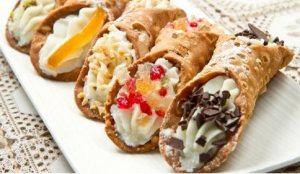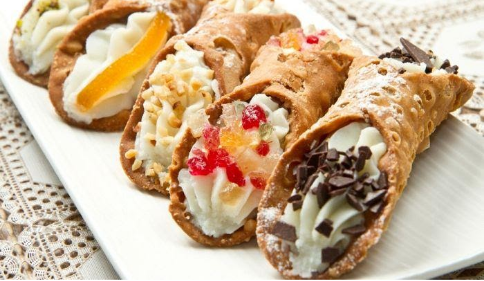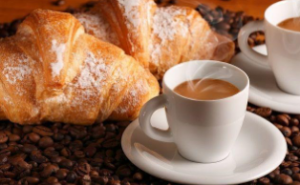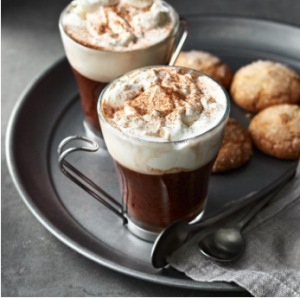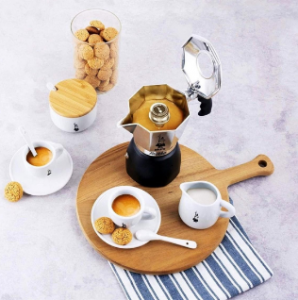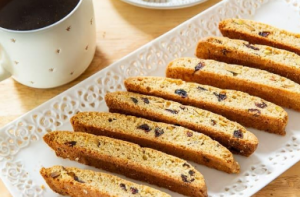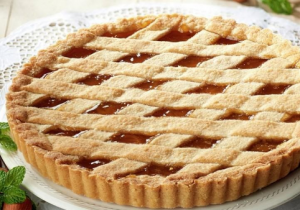Not surprisingly, Italians consider themselves coffee snobs . No other country has so many rules and rituals for drinking the fragrant hot drink. In Italy they say that they make the best coffee on the planet and most tourists confirm it.
Morning coffee is a mandatory ritual for all Italians, who do not emphasize a serious breakfast, and often the beginning of the day is sweetened with a variety of delicious pastries. Therefore, the question of what to eat after morning Italian coffee is very relevant.
How do Italians drink their coffee?
The most popular drink in Italy is coffee. It can be with or without milk, but it is always tasty and fragrant. Traditionally coffee is drunk alone , separately from food.
Italians drink cappuccino or latte only until 11 am , after which cafes usually do not serve coffee with milk. The explanation is simple – in Italy it is believed that milk is processed poorly after a meal, which is why it is drunk only in the morning on an empty stomach.
If you want your drink to include coffee, do not order “latte”, which in Italian means milk, but “latte macchiato”, as it is called in Italy the favorite coffee drink of many people with a soft creamy taste.
In the afternoon, Italians prefer black coffee or coffee with a little cream. The big cities of Italy are condescending to the quirks of tourists and will serve cappuccino even in the evening , but may accompany it with an ironic look.
At noon and in the late afternoon, Italians order “normal coffee”, as they call espresso. The word espresso is just a technical term, so if you want coffee, it is enough to say un caffè. Drink it extremely black and without sugar, so as not to interrupt the bright aroma and noble taste.
But don’t think that the Italians leave no room for variation. You can ask for a “lungo” for coffee diluted with water or a “dopio” for a double dose. If you want a cooler drink, ask for “cafe al vetro” and you will be served coffee in a small glass cup, which will cool much faster.
You can also try “coffee pot” – espresso with a small dose of alcohol. The funny thing is that in Italian the name of this drink translates as “correct coffee”.
The Italians despise the so-called Americano, because according to their understanding it is just a dark, tasteless liquid, which cannot be called coffee. If short espressos for two sips are not suitable for you, order “cafe macineta” – this is home-style coffee.
It will be prepared in a geyser coffee machine, also called Moka Express, which every self-respecting Italian has at home.
What do Italians eat for breakfast?
The first meal is far from the most important thing for Italians. Rather, it’s a nice little breakfast with a good cup of coffee or milk. So what do they eat for breakfast in Italy?
Traditional Italian breakfast does not include scrambled eggs, bacon or even the usual sandwich for many Europeans. It is not common in the country to spend a lot of time preparing breakfast . Sometimes Italians eat a light toast with cheese or ham, but most miss it.
They like to start their day with fresh baked pasta, which is complemented by their favorite drinks , first of all coffee. Italian breakfast is often accompanied by freshly squeezed juice, most often orange.
Most Italians like to have breakfast fast. They stop at small cafes on the way to work and have a quick coffee with a croissant at the bar. Tourists can also experience the atmosphere of an Italian morning by stopping at a good cafe in Rome, Milan or Naples.
Every morning, sunny Italy wakes up with the aromas of fresh bakery products, which are tempting for breakfast, in addition to the smell of coffee . The local bakers are very successful in this and have invented a number of delicacies that can delight the most capricious lovers of sweet things.
What is offered in combination with coffee?
The cornet
The croissant is the perfect addition to a good cup of coffee. It is true that in Italy this sweet breakfast is usually called Cornetto. The traditional Italian cornet has a slightly different taste than French croissants.
They contain less butter, but are sweeter and are often baked with orange peel. The root fillings are very different and can be jam, cream, chocolate. There are also cornets with marzipan and almonds.
Biscuits
The Italian breakfast is often complemented by biscotti, somewhat reminiscent of sweet croutons. The name of this delicious cookie means “twice baked”. First, bake a sweet loaf, then cut into thin slices , which are again sent to the oven.
This cookie was invented in Italy in the 13th century. Originally prepared with almonds, but now there are varieties with dried fruits, chocolate, hazelnuts and other additives. It is customary to eat biscuits with cappuccino in the morning and wine with wine in the evening. Because cookies are dry, they are usually dipped in the drink.
Cannoli
In Italian cafes it is okay to eat cakes with coffee even in the morning. Traditional Sicilian canola are a frequent guest at the breakfast table.
The wonderful crispy waffle rolls, filled with delicate cream, can brighten up every morning. They are gorgeous rolls of butter dough, filled with a thick cream with a rich milky taste.
The dough is rolled on special metal canola tubes and then the rolls are fried. cream ricotta cheese, powdered sugar, cream, chocolate and liqueur are used for cream, and various nuts and candied fruits, such as orange peels or cherries, are used for decoration.
First, canola was invented in Sicily , and today it can be tasted in bakeries all over Italy.
The crust
Italian breakfast must be delicious. And what could be tastier than a tart? Therefore, the Italian Crostata is often present at the morning table.
This wonderful cake will give you a good mood for the whole day. In Italy, crostata is made with chocolate, apricot jam, cherries, berries and other fillings, so you can choose a tart with your favorite flavor.
Ciambella
Ciambella is an Italian ring-shaped cake made from flour, baking powder, salt, eggs, milk (or cream), sugar, oil and vanilla. Sometimes honey is added as a sweetener.
To create a light texture, mix the sugar and eggs together and add butter and milk, stirring constantly until the mixture becomes frothy.
Then add sifted flour with baking powder and bake the cake in a round cake form. Raisins, fruit, jam, chocolate, fruit yogurt can be added to the dough.
For extra flavor and taste include lemon, orange, cocoa, hazelnuts and more. The finished cake can be decorated with powdered sugar, cedar or almond nuts, pistachios, etc. Ciambella is very popular among Italians and is often baked and sold at holiday fairs.

